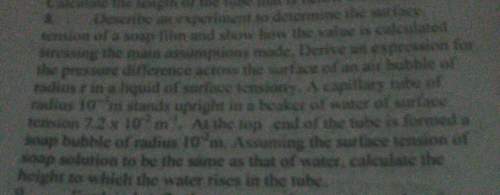
Physics, 02.11.2021 18:40 madmonee8378
Sometimes, you observe one object, and instead of getting one thermal spectrum, you get two! Below is a spectrum taken of a nearby star.
Looking at the spectrum, you should see two clear thermal peaks. The one on the left, peaking in the visible range, is from the star. What's causing the other peak?
It turns out that this peak is being produced by a debris disk surrounding this very young star. Debris disks are commonly seen around young stars - they are usually present during planet formation and then eventually dissipate. What temperature is the material in this disk at? Show your work and explain your reasoning clearly.
Hint: Pay attention to the wavelength units!!


Answers: 3


Another question on Physics

Physics, 22.06.2019 12:00
Under normal conditions, describe how increasing the temperatures effects the solubility of a typical salt
Answers: 1

Physics, 22.06.2019 12:30
What is the power rating of the lightbulb if 3.0 a flow through it when connected to a 15 v battery
Answers: 1

Physics, 22.06.2019 13:20
Which of the following is the main energy source for the sun? a. fission of hydrogen b. fusion of hydrogen c. fusion of helium d. fission of iron
Answers: 2

Physics, 22.06.2019 15:30
What is a subatomic particle with a negative charge and very little mass?
Answers: 1
You know the right answer?
Sometimes, you observe one object, and instead of getting one thermal spectrum, you get two! Below i...
Questions

Mathematics, 13.10.2020 23:01

Mathematics, 13.10.2020 23:01

Mathematics, 13.10.2020 23:01

Chemistry, 13.10.2020 23:01

Computers and Technology, 13.10.2020 23:01

Mathematics, 13.10.2020 23:01


Advanced Placement (AP), 13.10.2020 23:01



Arts, 13.10.2020 23:01



Physics, 13.10.2020 23:01



Computers and Technology, 13.10.2020 23:01

Mathematics, 13.10.2020 23:01

Business, 13.10.2020 23:01




